Robert Erlandson1,2; Gerry Conti3; David Bergeman4
Department of Biomedical Engineering1
Department of Electrical & Computer Engineering2
Occupational Therapy Program3
Wayne State University, Detroit, MI 48202
CREFORM Corporation, Wixom, MI 483934
INTRODUCTION
The value of agile systems becomes readily apparent when considering the needs of students with multiple impairments. The physical changes inherent in maturation require simplicity, mobility, and adjustability for positioning and therapeutic interventions, yet commercially available devices typically are expensive, do not adjust for growth, and require sophisticated knowledge, skills and/or tools for modification. Agile devices can meet student, educator and therapist needs for positioning and therapeutic interventions.
Agile system design refers to the integration of organization, people, and technology into a coordinated whole (CREFORM Corporation, 2002; Erlandson, 2008; Kasarda & Rondinelli, 1998). Agile systems concepts and agile devices can be effectively employed as an enabling technology for people with disabilities. Agile refers to system properties that are: (1) Simple: simple design, simple tools, simple assembly; (2) Mobile: portable, lightweight devices; (3)Adjustable: devices may quickly and easily reflect changes in the work environment, the product, and the product demand; and (4) Reusable: materials may be reused as products, processes, or assembly volumes change (CREFORM Corporation, 2002; Kasarda & Rondinelli, 1998). The life of the device may be geared to the useful period of operation for a student, and then the components can be reused in a new device or system configuration. Agile devices directly address issues concerning the positioning of the student with respect to their environment.
AGILE SYSTEMS AND CREFORM
Pipe and joint technology is a classic example of an agile system technology and CREFORM® Corporation is one of the largest companies manufacturing such technology. Creform is widely used throughout industry for material handling, positioning, and storage systems. Creform exemplifies the industrial engineering concept of an agile system, i.e., a system that can easily change to meet new work requirements. CREFORM® Corporation is a subsidiary of the Yazaki Kako® Corporation of Japan. In Japan, Creform is also used extensively in the home for health and safety-related uses, e.g., bath stools, hand rails, and mobile stools (Kaigo-Web, 2008), as well as for gardening, decorative patio shelving for flower pots, storage sheds and racks, and greenhouse seedling racks (Yazaki, 2008).
Creform is a complete system of over 500 components including; pipes, joints and hardware accessories that allows one to design and build custom devices. The Creform pipes are steel with a plastic coating that yields strength and stability to the devices. In Japan CREFORM® is sold in the U.S. equivalent of Home Depot® or Lowe’s®. People design and build custom devices for home, leisure and hobby activities. The devices presented in this paper were all designed and built by teachers or occupational therapists.
SEATING AND POSITIONING
Students in wheelchairs are always physically separated from other people by the size of the wheelchair. In many cases, this distance eliminates the ability to touch or effectively interact with another person. In addition, because of specialized needs, much education and therapy is done on a one-to-one basis. Both of these factors decrease the disabled student’s ability to interact with others in group situations. Yet social and physical interactions are powerful tools to encourage maturation of the brain. In one animal- based study, it was found that the best performance occurred with the addition of social interaction to an enriched environment requiring physical activity (Johansson & Ohlsson, 1996). Vygotsky and those following his lead emphasize the importance of the social context for learning (Bodrova & Leong, 2007). Both the AMOS chair and the floor seat help place children in closer proximity to each other, thus encouraging touch, and sharing or passing of materials, in addition to other types of peer interaction and collaboration.
The ability to interact with persons and objects in the environment also assists the development of a meaningful body scheme, or internal model of the body. The body scheme, in turn, aids in the development of balance during sitting, standing, and walking; and in head and trunk position with respect to gravity (Massion, 1994). Balance and posture in the developing child depends on the maturation and state of the sensorimotor and musculoskeletal systems, constraints on balance from both the child’s internal and the external environments, and the child’s level of motivation and behavioral development (Woollacott, Assaiante, & Amblard, 1994). As problems can be expected in several of these areas in disabled children, such as the sensorimotor and musculoskeletal systems, the ability to actively engage in activity using a variety of body postures is critical.
The agile systems for seating described below demonstrate the concepts of simplicity and adjustability. The AMOS chair is not designed to permanently replace a more specialized and supportive wheelchair. However, it does allow the therapist or teacher to easily move a student into position within a group of students at a table, to gain access through narrow doorways and to position the student at the same height as other seated children.
The floor seat allows the student to sit unaided on the floor without the need for physical support from adults. Again, it is not intended to provide full support while sitting on the floor, but rather to accommodate to the student’s individual physical limitations. The floor seat is helpful for busy teachers and therapists, but it provides a greater benefit in allowing the student to experience independence in interaction with others on the floor, while being secure in sitting balance. The adjustability of both the AMOS chair and the floor seat allows it to be modified for each student to accommodate growth, or to be redesigned for another child’s needs.
Amos Chair (Adjustable Mobile Orthosis Seat)
 Figure 1: Students sitting in AMOS chairs at an activity table. The students are interacting and engaged. d Figure 1: Students sitting in AMOS chairs at an activity table. The students are interacting and engaged. d |
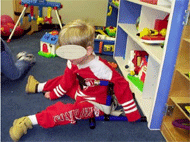 Figure 2: A child positioned in the Floor Seat and engaged in play activity. d Figure 2: A child positioned in the Floor Seat and engaged in play activity. d |
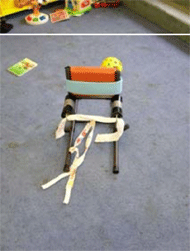 Figure 3. Floor Seat frame with support padding and straps. d Figure 3. Floor Seat frame with support padding and straps. d |
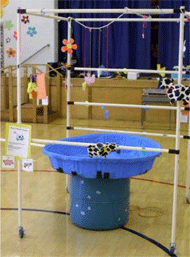 Figure 4: Large activity frame set up for a play activity. d Figure 4: Large activity frame set up for a play activity. d |
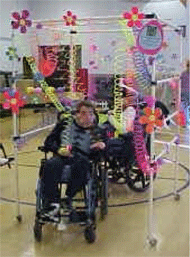 Figure 5: Students in wheelchairs navigating and engaging with objects hanging from the activity frame. d Figure 5: Students in wheelchairs navigating and engaging with objects hanging from the activity frame. d |
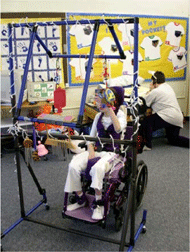 Figure 6: This activity frame can be used by one or two students. The height and angle bars are adjustable allowing great flexibility. d Figure 6: This activity frame can be used by one or two students. The height and angle bars are adjustable allowing great flexibility. d |
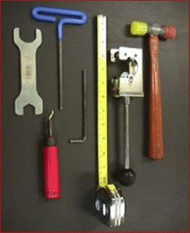 Figure 7: Simple tools are all that is necessary to build CREFORM devices. d Figure 7: Simple tools are all that is necessary to build CREFORM devices. d |
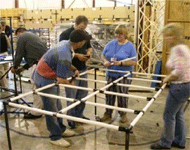 Figure 8: A group of teachers and occupational therapists assembling a CREFORM device. d Figure 8: A group of teachers and occupational therapists assembling a CREFORM device. d |
Staff wanted all students to be able to interact with their peers at the same level and in close proximity to each other. They also wanted the students to be able to be moved about the classroom and building with the same ease as a wheelchair. Existing devices such as corner chairs are cumbersome and do not allow the desired interaction.
Figure 1 shows a group of children sitting in AMOS chairs at an activity table. Notice that the children are interacting. The Adjustable Mobile Orthosis Seat (AMOS) is a chair like frame designed to hold any seating orthosis that fits in a wheelchair. It is adjustable to any angle needed per individual student. AMOS is mobile, being on wheels with brakes.
Students are now able to get close enough to each other to encourage interaction without staff encouragement or intervention. As students grow and change, the chair is adjustable.
Floor Seat
In this classroom teachers wanted the students to play together while seated on the floor, but one student could not sit independently. When this student was physically handled, his abnormal reflex patterns were stimulated and it was difficult to achieve a seated position on the floor. The objective was to design a simple device that would provide the student an opportunity to work on sitting skills while interacting with their peers on the floor. Figure 2 shows a child positioned in the Floor Seat sitting on the floor.
The floor seat is an adjustable frame that provides sitting support for children who are unable to sit independently. Padding and support/safety straps are added to the basic frame as needed, see Figure 3.
Using the Floor Seat the students are now able to sit on the floor without staff intervention. The frame helps to improve sitting skills as well as head and neck control while actively participating in an activity. Being a very simple device, the Floor Seat can easily be modified to accommodate individual user needs.
Therapeutic Activities
Enrichment of the sensorimotor environment is important when planning therapeutic activities for students with severe disabilities, as well as simultaneously offering engaging opportunities for arm and hand movement, grasp and manipulation. Vision, touch, proprioception and vestibular sensory information from objects in the external environment contribute to effective orienting of the body parts relative to the trunk, to the external world, and to gravity (Massion,1994) and can be used effectively in therapeutic activities.
Each of these sensations can be made available using an activity frame. Moving visual information contributes to the development of posture and balance and can be achieved by moving the student through an environment, or by having objects that move around the person. Reaching, touching, grasping and/or manipulating objects, such as can be found on an activity frame, provide touch and proprioceptive information, as well as visual input. Vestibular sensation can be added by using activities that require either the head to turn or move up and down, or the entire body to change its position in space, such as “ducking” under a rope or tilting to one side.
The activity frame encourages active movement by the student through the use of engaging objects. These objects can serve to dynamically focus the student’s visual attention, which helps integrate perception, action and cognition into a unified whole for goal-directed movement (Gottlieb, 2007). Repetitive active movement, then, helps to refine and consolidate neural connections in the brain, resulting in more efficient and automatic movement (Nudo & Friel, 1999).
Activity Frame
Recreational activities are a fun and hence effective in motivating students to engage in reaching, touching, grasping, moving and manipulating objects. However, students in wheelchairs were unable to navigate independently to seek out recreational activities/stimuli. The design objective was to provide a lightweight, movable apparatus for displaying various sensory activities with which students can interact. Interaction includes; batting, pulling, reaching, and manipulating themselves or objects in a variety of ways to provide additional sensory stimuli and both gross and fine motor activity for students who are severely physically challenged.
Sensory/fine motor goals can be achieved by using an activity frame. Students reach overhead, cross midline, and place their hands together to interact with objects on the bar. They are experiencing additional sensory awareness through auditory and visual stimuli.
There have been a number of activity frames designed and built. Some, like the one pictured above, are large allowing more than one student to be engaged. Others, like the one in Figure 6, are smaller, designed for use by one or two people. The ability to provide a simple, mobile and most importantly adjustable frame allows for tremendous flexibility in the design of therapeutic and recreational activities.
OBTAINING OR BUILDING AGILE DEVCIES
All the devices shown were designed and built by teachers or occupational therapists. The CREFORM technology briefly described above can be assembled using the tools shown in Figure 7.
The tools are: a wrench, deburring tool, ball-end allan wrench, allan wrench, tape measure, pipe cutter and mallet. Figure 8 shows a group of teachers and occupational therapists assembling a CREFORM device at CREFORM’s Wixom, MI facility.
All the devices described herein, and many others, can be purchased from CREFORM. Plans are available for all the devices shown herein and kits can be delivered that contain all the necessary components along with assembly instructions.
CONCLUSIONS
This paper has presented a small sample of agile devices that have demonstrated their utility and effectiveness in addressing the needs of students with moderate to severe physical and cognitive impairments in the greater Detroit metropolitan area. There are literally hundreds of agile devices in schools throughout Michigan and South Carolina, the U.S. headquarters of CREFORM. Only a few seating, positioning and therapeutic examples have been presented, but there are devices related to work, vocational training and rehabilitation, positioning of augmentative communication devices, computer workstations and even changing tables.
REFERENCES
Bodrova, E., & Leong, D., J. (2007). Tools of the Mind: The Vygotskian Approach to Early Childhood Education (2 ed.). Upper Saddle River, NJ: Pearson Prentice Hall.
CREFORM Corporation. (2002). The CREFORM System. CREFORM Healthcare System
Erlandson, R. F. (2008). Universal and Accessible Design for Products, Services, and Processes. Boca Raton, FL: CRC Press, Taylor & Francis Books, Inc.
Gottlieb, J. (2007). From thought to action: the parietal cortex as a bridge between perception, action and cognition. Neuron, 53, 9-16.
Johansson, B. B., & Ohlsson, A.-L. (1996). Environment, social interaction, and physical activity as determinants of functional outcome after cerebral infarction in the rat. Experimental Neurology, 139, 322-327.
Kaigo-Web. (2008). Bath, Safety and Medically Related Devices (Japan) http://www.kaigo- web.info/kensaku/index.html.
Kasarda, J. D., & Rondinelli, D. A. (1998). Innovative Infrastructure for Agile Manufacturers. MIT Sloan Management Review, 39( 2).
Massion, J. (1994). Postural control system. Current Opinion in Neurobiology, 4, 877-887.
Nudo, R. J., & Friel, K. M. (1999). Cortical plasticity after stroke: implications for rehabilitation. Revue Neurology (Paris), 155(9), 713-717.
Woollacott, M., Assaiante, C., & Amblard, B. (1994). Development of balance and gait control. In A. Bronstein, T. Brandt & M. Woollacott (Eds.), Clinical Aspects of Balance and Gait Disorders: Arnold Publications.
Yazaki.(2008).Gardening (Japan). http://www.yazaki.co.jp/syouhin/garden/index.html.